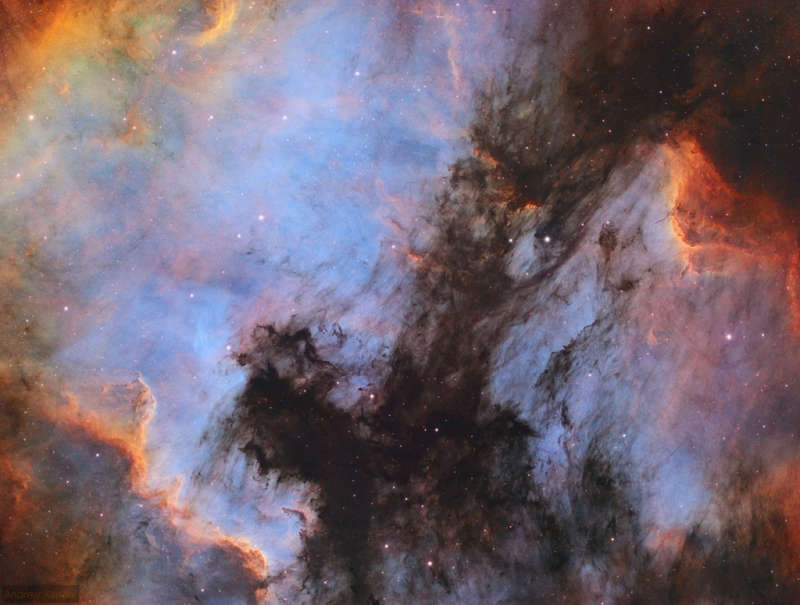Credit & Copyright: Andrew Klinger
Explanation:
Fans of our fair planet
might recognize the outlines of these
cosmic clouds.
On the left, bright emission outlined by dark, obscuring dust lanes
seems to trace a continental shape, lending the popular name
North America
Nebula
to the emission region cataloged as NGC 7000.
To the right, just off the North America Nebula's east coast,
is IC 5070, whose avian
profile suggests
the
Pelican Nebula.
The two bright nebulae are about 1,500 light-years away,
part of the same
large and complex
star forming region, almost as nearby as the
better-known Orion Nebula.
At that distance, the 3 degree wide field of view would span
80 light-years.
This careful cosmic portrait
uses
narrow band
images combined to highlight the bright
ionization fronts
and the characteristic glow from atomic hydrogen, sulfur, and oxygen gas.
These nebulae can be seen with binoculars from a dark location.
Look northeast of bright star
Deneb in the constellation Cygnus the Swan.
1999 2000 2001 2002 2003 2004 2005 2006 2007 2008 2009 2010 2011 2012 2013 2014 2015 2016 2017 2018 2019 2020 2021 2022 2023 2024 2025 |
Yanvar' Fevral' Mart Aprel' Mai Iyun' Iyul' Avgust Sentyabr' Oktyabr' Noyabr' Dekabr' |
NASA Web Site Statements, Warnings, and Disclaimers
NASA Official: Jay Norris. Specific rights apply.
A service of: LHEA at NASA / GSFC
& Michigan Tech. U.
|
Publikacii s klyuchevymi slovami:
North America Nebula - Pelican Nebula - Tumannost' Pelikan - emissionnaya tumannost'
Publikacii so slovami: North America Nebula - Pelican Nebula - Tumannost' Pelikan - emissionnaya tumannost' | |
Sm. takzhe:
Vse publikacii na tu zhe temu >> | |
